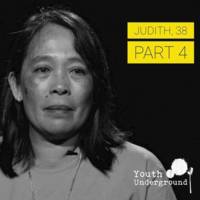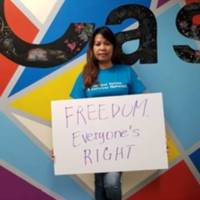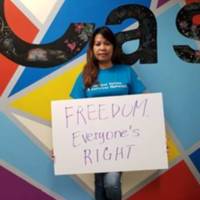
Judith
There are an estimated 403,000 people living in conditions of modern slavery in the United States (GSI 2018). The US attracts migrants and refugees who are particularly at risk of vulnerability to human trafficking. Trafficking victims often responding to fraudulent offers of employment in the US migrate willingly and are subsequently subjected to conditions of involuntary servitude in industries such as forced labour and commercial sexual exploitation. Judith travelled from the Philippines to New York in 2005 to work as a domestic worker. Instead of the eight-hour working day she was promised, Judith was forced to work up to eighteen hours a day, seven days a week for little pay. Her passport was confiscated, and she was told not to tell anyone about her situation. She was finally able to escape in 2007 while the family was out of the house.

Angela (Narrative 3)
There are an estimated 403,000 people living in conditions of modern slavery in the United States (GSI 2018). The US attracts migrants and refugees who are particularly at risk of vulnerability to human trafficking. Trafficking victims often responding to fraudulent offers of employment in the US migrate willingly and are subsequently subjected to conditions of involuntary servitude in industries such as forced labour and commercial sexual exploitation. Angela Guanzon was living in the Philippines facing the choice of forced marriage or unemployment when she was recruited as a health care worker in California. Upon arrival, Angela was told she owed the recruiter $12,000 and would have to work for 10 years to pay off the debt. She was forced to work long hours on little sleep and received limited food. She was finally able to escape her exploitation when a neighbour recognised the signs of labor trafficking and contacted the FBI. Angela now works with anti-trafficking charities including CAST-LA to educate people on human trafficking.

Angela (Narrative 2)
There are an estimated 403,000 people living in conditions of modern slavery in the United States (GSI 2018). The US attracts migrants and refugees who are particularly at risk of vulnerability to human trafficking. Trafficking victims often responding to fraudulent offers of employment in the US migrate willingly and are subsequently subjected to conditions of involuntary servitude in industries such as forced labour and commercial sexual exploitation. Angela Guanzon was facing the prospect of being forced into marriage or being jobless in the Philippines, leading her to seek out work abroad. She thought all her problems had been solved when she in 2005 was recruited for a health care job in California. However, upon arrival her trafficker demanded $12,000 for the ‘opportunity. Her passport was seized, and they threatened to call the police and tell them Angela had stolen something if she ran away. Guanzon was ordered to work for 10 years to pay off the debt at $300 a month. Angela was forced to work 18-hour days and sleep on the hallway floor of an elder care facility in Long Beach. Her exploitation finally ended after a neighbour noticed the signs of labour trafficking and contacted the FBI.